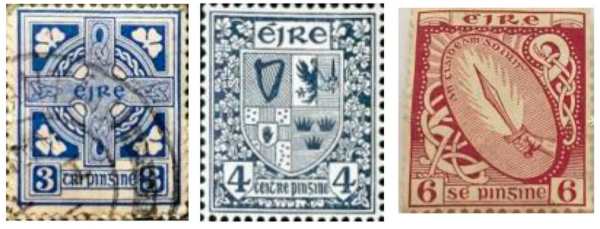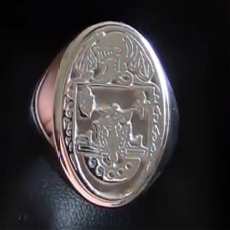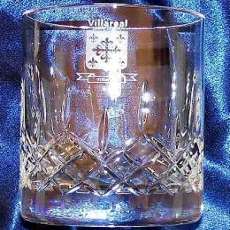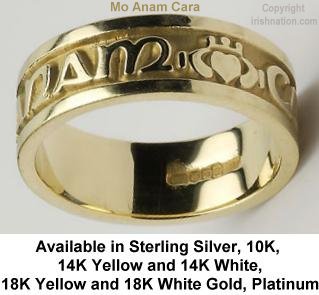-
Genealogy & Names
-
Tourist Information
-
Culture & Reference
CHRISTMAS GIFTS FROM IRELAND - VISIT IrishNation.com Only 10 Days To Go! |
|
January 2023 
from Free Photos Of Ireland |


 WONDERFUL VALENTINES GIFTS FROM IRELAND
WONDERFUL VALENTINES GIFTS FROM IRELAND

 FREE WORLDWIDE DELIVERY
FREE WORLDWIDE DELIVERY

find out more |

| Popular Articles from Recent Newsletters: |


|
Academy Awards for Irish actors, producers and screen-writers have been thin on the ground over the years so it was with a sense of delight that the news of 14 Irish nominations for the Oscars was received. 
Of course the stand-out movie of Irish interest at the moment is 'The Banshees of Inisherin' with both Colm Farrell and Brendan Glesson receiving Oscar nods as well as Martin McDonough for best screenplay and Kerry Condon for best supporting actress. The movie has received 9 nominations in various categories! However there is also great acclaim within Ireland (and beyond these shores) for the small-budget Irish language movie 'An Cailín Ciúin' (The Quiet Girl). The movie is amazingly the first ever Irish-language production to receive an Oscar nomination for best international film. 'An Irish Goodbye' was nominated in the live action short category. Jonathan Redmond was nominated for best editing for his work on Elvis, and Richard Baneham was nominated for best visual effects for Avatar: The Way of Water. Selected Predictions: Best Director: Martin McDonagh, The Banshees of Inisherin (prediction: YES! Banshees to triumph although sentiment might favour Speilberg and 'The Fabelmans'). Best Movie: The Banshees of Inisherin (prediction: Banshees is in with a fair shout although 'All Quiet on the Western Front' is amazing). Best Actor in a leading role: Colin Farrell (The Banshees of Inisherin) and Paul Mescal (Aftersun) (prediction, probably Colin Farrell's best ever performance, although Austin Butler was brilliant as Elvis. Paul Mescal is the Irish star of the highly acclaimed 'Normal People' and while he continues his upward trajectory it is hard to see a win for him here). Best Film Editing: The Banshees of Insherin, Mikkel E G Nielsen and Jonathan Redmond for Elvis (prediction: surely the madcap nature of 'Everything Everywhere All at Once' will win here). Best Supporting Actor: Both Barry Keoghan and Brendan Gleeson, The Banshees of Inisherin (prediction: YES! The always watchable Gleeson to take the award). Best International Feature Film: An Cailín Ciúin/The Quiet Girl (prediction: there will be candles lit all over Ireland for this beauty of a movie to win, but quite honestly it is very hard to see past 'All Quiet on the Western Front' which was equally amazing but for different reasons. Hope we are wrong.) Best original Screenplay: The Banshees of Inisherin, Martin McDonagh (prediction: Banshees in with a shout but Tár was amazing too). Best Supporting Actress: Kerry Condon, The Banshees of Inisherin (prediction: YES! we are predicting victory for Kerry Condon, one of the unsung stars of the marvelous 'Better Call Saul' series and brilliant in Banshees). Ok so there are a few certainties predicted for you. If you think you can do better then you know what to do... COME ON IRELAND!! |


 WONDERFUL VALENTINES GIFTS FROM IRELAND
WONDERFUL VALENTINES GIFTS FROM IRELAND

find out more |

|
pronounciation: Étáin is 'ee-tayne', Aengus Óg is 'ain-gus owg' Midir is 'mih-deer', Tuatha Dé Dannan is 'two-hah day dan-in' 
Étáin had met Midir while he was staying with his foster-son, Aengus Óg, the God of love. Midir had been wounded, losing an eye while under Aengus' protection, and this was such a blow to his status that even after his eye was restored, he demanded that Aengus make restoration to him. Now, being the God of love, Aengus was able to placate Midir by introducing him to the beautiful Étáin. The two began a passionate love affair, and all was well until the time came for Midir to return to his home. Midir was already married, to Fuamnach, a powerful woman and his equal in every way. She had raised children and foster-children with him and, unsurprisingly, was deeply insulted when he brought this strange woman home with him. She vented her rage on Étáin, turning her into a shower of rain, which fell in a pool before condensing into a jewelled fly. However, to Fuamnach's surprise Étáin, now as a fly, did not leave Midir, and his love for her did not diminish. The sound of her wings was sweet music to him, and the magical fly perched on his shoulder wherever he went. Fuamnach was furious and sent a storm to blow Étáin away forever. Aengus managed to rescue her for a short time, but the storm found her again, and Étáin was blown and battered about for a long time. At last, she was blown in through the window of a mortal King's hall and fell into the goblet of the king's wife, who swallowed the fly Étáin whole, becoming pregnant at that instant. Born again as a mortal woman, Étáin grew up with no memory of her past life, though her beautiful appearance was the same. When the High King of Ireland, Eochaid Airem, asked for her hand in marriage, she agreed, and was a loyal and good wife to him. But Midir had never finished searching for her and to his joy finally found her again. He had been searching for her for thousands of years and begged her to run away with him. Étáin refused. She honored the bond she had with her mortal husband, demanding that Midir get Eochaid's permission before she so much as kissed him. Midir managed to trick King Eochaid into giving him permission to kiss and embrace his wife but, realizing his error, Eochaid then spent a whole month training and equipping his army to prevent Midir from claiming his prize. This was no obstacle to a man of the Tuatha Dé Dannan! Midir simply appeared in the King's hall next to Étáin on the appointed day and kissed her. When he had done so Étáin's memories of him returned, and the two lovers vanished from the King's hall to live their immortal life together. Although Étáin was faced with terrible hardship she held onto her essential self, and for her love for Midir through her transformation into a fly and then into mortal form. Her integrity and strong sense of values come through in this story when she refuses the beguilement of her faery lover, and insists on keeping faith with her mortal husband. Love won out in the end though, when the beguiling and beautiful Étáin followed her heart and returned again to the immortal realm. |


 FLAGS FROM IRELAND MAKE GREAT GIFTS!
FLAGS FROM IRELAND MAKE GREAT GIFTS!

find out more |

 The formation of the Irish State (the 'Free State') in 1922 landed the new Irish Government with a sudden abundance of practical issues to solve. Apart from the fact that a Civil War was about to break out there was also the not inconsequential issue about how the new Ireland should announce its arrival to the world.
The formation of the Irish State (the 'Free State') in 1922 landed the new Irish Government with a sudden abundance of practical issues to solve. Apart from the fact that a Civil War was about to break out there was also the not inconsequential issue about how the new Ireland should announce its arrival to the world.
One of the ways this is most obviously achieved is by the creation of new coinage and stamps. As an interim measure the existing stock of British stamps were still used in Ireland, and were over-printed with 'Saorstát Éireann' on them. Clearly this was not a situation that could continue! So, in early 1922 the newly appointed Irish Postmaster General J.J. Walsh, announced that there would be an artistic competition so that new Irish stamps could be created. It was required that the submitted designs must be 'symbolical in character, and the inscriptions must be in Gaelic characters'. The competition attracted great interest from artists including Harry Clarke and Wilhelmina Geddes, both of whom were also well known for their beautiful work with stained glass. Over 800 entries were received. The design by James Ingram was the first to be printed onto an Irish stamp and is perhaps the most iconic Irish stamp every created. The design featured an outline map of Ireland with an arch and zoomorphic ornamentation with shamrocks and Gaelic words. It is important to note that the entirety of Ireland was shown in the artwork with no visible indication of a border around the six Counties in Ulster. Yet the design is technically accurate as the stamp was issued a matter of days before 'Northern Ireland' actually 'opted out' of the new Irish State in December 1922 as per the terms of the hotly disputed Anglo-Irish Treaty.  It was the following year, 1923, that the other 3 stamps in this most famous set of Irish stamps were issued. Lily Williams, Millicent Grace Girling and John J O'Reilly designed the famous blue Celtic Cross stamp, the Four Provinces of Ireland stamp, and the famous 'An Claidheamh Soluis' stamp (meaning 'the sword of light').
It was the following year, 1923, that the other 3 stamps in this most famous set of Irish stamps were issued. Lily Williams, Millicent Grace Girling and John J O'Reilly designed the famous blue Celtic Cross stamp, the Four Provinces of Ireland stamp, and the famous 'An Claidheamh Soluis' stamp (meaning 'the sword of light').
The design of these stamps was intended to indicate the Irish State as being one based in its own exclusive history and culture, with the extensive use of Irish symbols and language. An expression of nationalism. Yet it is remarkable how these intricate designs are similar in tone to earlier stamps issued by Irish nationalists. In 1865 the Irish Fenians in north America instigated a number of raids against British forces in what would soon become Canada. They hoped that the agitation in America would inspire agitation in Ireland. As part of their propaganda they created and printed several stamp designs in Boston, a number of which were distributed, raising funds but ultimately having only symbolic value. Yet it is this very symbolism that endured. Some examples of these Fenian stamps below (known as 'forerunners' and sold for 1, 3 and 24 US cents), would surely not look out of place among those stamps that were actually issued in Ireland over a half a century later. 
Apart from stamps there were other efforts to indicate that Ireland was a new nation state. Irish Passports were introduced in 1923, Coins in 1928 and the imperial red post boxes were gradually painted green! (covering up the original red). The first Irish commemorative stamp (as opposed to a definitive stamp) was of Daniel O'Connell in 1929. We have no way of knowing what the man known as 'The Liberator' would have thought about Ireland's progress. But what is certain is that the implementation of these seemingly innocuous symbols greatly helped to cement the place of the new Irish State within the consciousness of the world. |

 HELP KEEP THIS NEWSLETTER ALIVE!
HELP KEEP THIS NEWSLETTER ALIVE!

|
||||

|
Daniel O'Connell was born in 1775 in Cahirciveen, County Kerry. Although he was born into the native ascendancy, he was raised among the Catholic peasantry and thus learned not only the Gaelic language, but also the many tribulations faced by the poorer class. 
As a teenager he was sent to France for further education but travelled to London in 1793 on foot of the French revolution. His experience of the violence that was part of the revolution forged his lifelong commitment to peaceful means to achieve social change. He qualified as a barrister and built a successful practice in Dublin. O'Connell abhorred the violence of the Wolfe Tone led 1798 rebellion but agreed with the overall aims of the United Irishmen. In 1802 O'Connell married his cousin Mary. The marriage was a good one with 12 children being born, although only 7 survived. The 1800 Act of Union had raised hopes of Catholic emancipation but these remained unfulfilled. O'Connell soon got involved in political activities and in 1823 founded the Catholic Association with the express aim of securing emancipation. O'Connell was known a famous orator, debater and a sharp wit. He was a regular thorn in the side of the Dublin authorities and when in 1815, he called Dublin Corporation a 'beggarly corporation', the authorities thought they had a chance to discredit him. One member of the Corporation, D'Esterre, a noted duelist, challenged him to a duel. If O'Connell accepted the challenge then it was thought he would certainly be killed. If he backed down then he would be politically damaged and discredited. To everyone's surprise O'Connell accepted the challenge and fatally wounded D'Esterre. O'Connell always regretted his death, and later assisted the D'Estere family financially. With the backing of the clergy O'Connell stood for election to the English parliament in County Clare in 1828. A massive victory for O'Connell followed as the momentum for reform gathered pace. O'Connell refused to take the Oath of Allegiance to the English crown and the crisis point had been reached. With 6 million supporters backing O'Connell the English government feared an uprising was on the cards and eventually granted Catholic emancipation in 1829. O'Connell was now the undisputed hero of Ireland and a year later became the first Catholic in modern history to be take his seat at the English parliament. By this time O'Connell had given up his legal practice and was concentrating fully on politics. He set his sight on repealing the Act of Union and the establishment of an Irish parliament. His Repeal Association organised monster meetings that attracted hundreds of thousands. An estimated three-quarters of a million people attended the Hill of Tara meeting. 
The more radical 'Young Irelanders' withdrew from the Repeal Association. In the countryside the potato crop was already beginning to fail. The Great Famine of 1847 devastated the Irish countryside. O'Connell tried to help and spoke in the London parliament, appealing for aid for his desperate starving countrymen. O'Connell will always be known as the 'Liberator' and Catholic emancipation was indeed his greatest success. It is unknown if his peaceful mass protests could have achieved any further concessions on the road to Irish independence. The famine that resulted in over 1 million deaths from starvation and a further million taking the emigrants boat stopped any political momentum dead in its tracks. At 70 years of age O'Connell was advised to move to a warmer climate to placate his ailing health. He set off for Rome but only made it as far as Genoa. He died in May 1847 and was buried in Glasnevin cemetery in Dublin. His funeral was among the largest ever seen in Ireland. |

|
by Shaun Ivory Whilst one can sometimes consider – even accept – the argument for supernatural phenomena in sombre surroundings, such as dank dungeons, gloomy glens and crumbling castles, it's a different story when it occurs in open countryside and leafy lanes. 
The Shallardstown legend is perhaps the strongest case in Ireland for a place in the X Files. Did it or did it not exist? With so much written about it why is the site so difficult to find? It was one of the first ghost stories my mother told me (she was from Nenagh, Co. Tipperary so I had no reason to doubt her then). The big house that was Shallardstown may no longer exist but its description brings it readily to life, even in this text-message century. This from American author James Reynolds, who visited there in the 1930s: 'Shallardstown stands deeply embowered in trees, namely Irish oaks and beeches. It is a gracious house of soft white Connemara stone, not too large, but spacious. The flight of stone steps leading to the portico is a miracle of line and balance. The portico itself is one of the finest in Ireland. Inside the house are a series of living rooms opening one into the other in the Italian manner.' A classic tale of sibling revenge, frustrated love, simmering hatred, a jewelled riding crop, a curse and a macabre deception; all these contributed to the tragic events that spiralled around the vortex that was Shallardstown mansion. Located at Ballymacorthy, near the village of Clogheen, Co. Tipperary, Shallardstown was built in the early 1800s by Cadogan Parrott, becoming his family seat on his marriage to the beautiful Angela Gammage. They were blessed at first by two daughters, Angelica and Rosaleen, but after some years Mrs Parrott committed suicide and then Cadogan died soon afterwards, leaving the elder daughter as the new chatelaine of Shallardstown. Angelica cast about for love and her gaze landed on one Dagan Ferritter. But as is often the way he fell for the younger sister and they wed in 1837. Being granted a small allowance from Angelica, the couple toured the Continent, while Angelica left for London, where she met a young Russian diplomat, Prince Nicholas Orloff, at the embassy there. A whirlwind courtship, wedding and honeymoon in St. Petersburg followed. They returned to Paris but tragically the young prince caught a chill and died. All the elements for tragedy began to fall into place, like the tumblers in a lock. Angelica returned to Shallardstown, dismissed all the servants bar one, the butler, Creed. She stayed home, saw no visitors, everything being brought in by Creed. Meanwhile, the Ferritters came home, too, but the widowed Princess denied them access, even audience, compelling them to exist in a small hut nearby, not too patiently waiting the day when Rosaleen could assume her role as mistress of Shallardstown. It was shortly after this time that Angelica started going out daily, leaving the grounds precisely at three o’clock in a landau, Creed acting as coachman. She remained hidden from view of any curious eyes, only her hand being visible, holding a bejewelled riding crop, a sentimental reminder of the wonderful if brief time in St. Petersburg. This daily drive around the beautiful countryside of the Vee Pass would take exactly one hour. The routine never varied, continuing for many years, only ceasing when when the parlous condition of Rosaleen and the man who had spurned Angelica, Dagan Ferritter, was brought to penury and near starvation. Finally goaded into action by the jeers and insults of the locals, Dagan took his courage in both hands and stormed up the long drive, hammering on the front door and demanding to see Angelica about Rosaleen’s rightful inheritance. At first Creed barred Dagan’s angry entrance but then suddenly caved in, confessing to the most startling deception the country has ever witnessed. His mistress had been dead for eleven years but, in accordance with her strict instructions, she was taken out in the landau, still clutching the riding crop to give the impression of her corporal presence around the countryside. This otherwise unbelievable story was given credence through a letter left by the Princess Orloff, in which it clearly set down the terms of her revenge on sister and brother-in-law. But this protracted delay in Rosaleen’s long-awaited inheritance was not enough! The letter also contained a cruel and sadistic rider to the testament that the riding crop should take pride of place in the great hallway of the mansion and a curse bestowed on anyone who dared remove it from its glass showcase. The couple chose to ignore such warnings and moved in straight away, but the tragic nature of the big house was not to be denied. Within a year both were dead. So the Whip of Orloff stayed in position and the property passed into the hands of a cousin, after which some years later it was purchased by a religious order of nuns. But that was not the end of the affair as strange stories began to circulate. Several accounts of a shapeless form were seen, standing in front of the showcase that had once contained the bejewelled crop and the sounds of a coach being driven away from the front door. The mansion became vacant again and a caretaker swore he had seen a ghostly figure on the stairs on at least two occasions. Further, he stated that he frequently had to close the mysteriously opened lid of the empty showcase, especially around 4 p.m. By the 1930s Shallardstown was still in use as a boys boarding school but by the ’60s it was a crumbling ruin. Today you would be hard put to find one stone upon another as you travel out of Clonmel on the way to Clogheen. That’s if have the nerve to seek it. |

View the Archive of Irish Phrases here: http://www.ireland-information.com/irishphrases.htm |

|
The winner was: Maryedillon2@aol.com who will receive the following: A Single Family Crest Print (usually US$29.99) Send us an email to claim your print, and well done! Remember that all subscribers to this newsletter are automatically entered into the competition every time. I hope that you have enjoyed this issue! 
by Michael Green, Editor, The Information about Ireland Site. http://www.ireland-information.com Contact us (C) Copyright - The Information about Ireland Site, 2023. 17 Páirc Ghrainbhil, Carraig Dubh, Contae Baile átha Cliath, Ireland Tel: 353 1 2893860 |

|
MARVELOUS GIFTS FOR ANY OCCASION FREE DELIVERY TO YOUR DOOR 
BIG REDUCTIONS! Stunning Family Crest Signet and Seal Rings 
DISCOUNTED FOR A LIMITED TIME Elegant Cufflinks 
Incredible Family Crest Plaques Made in Ireland 
Superior Framed Family Crest Parchments 
Gorgeous Glistening Galway Crystal 'Your-Name' Old Irish Sign NEW DESIGNS! 
From US$34.99 - Free Delivery 
New Designs available on our Coffee Mugs 
Personalized Licence Plate 
Personalized First Name Plaque. Great for Kids! 
'Your-Name' Polo & Tee Shirts 
From US$69 Delivered BIG REDUCTIONS! Stunning Engraved Rings from Ireland with Irish Language Phrases. Mo Anam Cara: My Soul Mate Gra Dilseacht Cairdeas: Love, Loyalty, Friendship Gra Go Deo: Love Forever Gra Geal Mo Chroi: Bright Love of my Heart SEE MORE GREAT OFFERS AND DISCOUNTS AT: IRISHNATION.COM FREE DELIVERY FOR A LIMITED TIME! |
